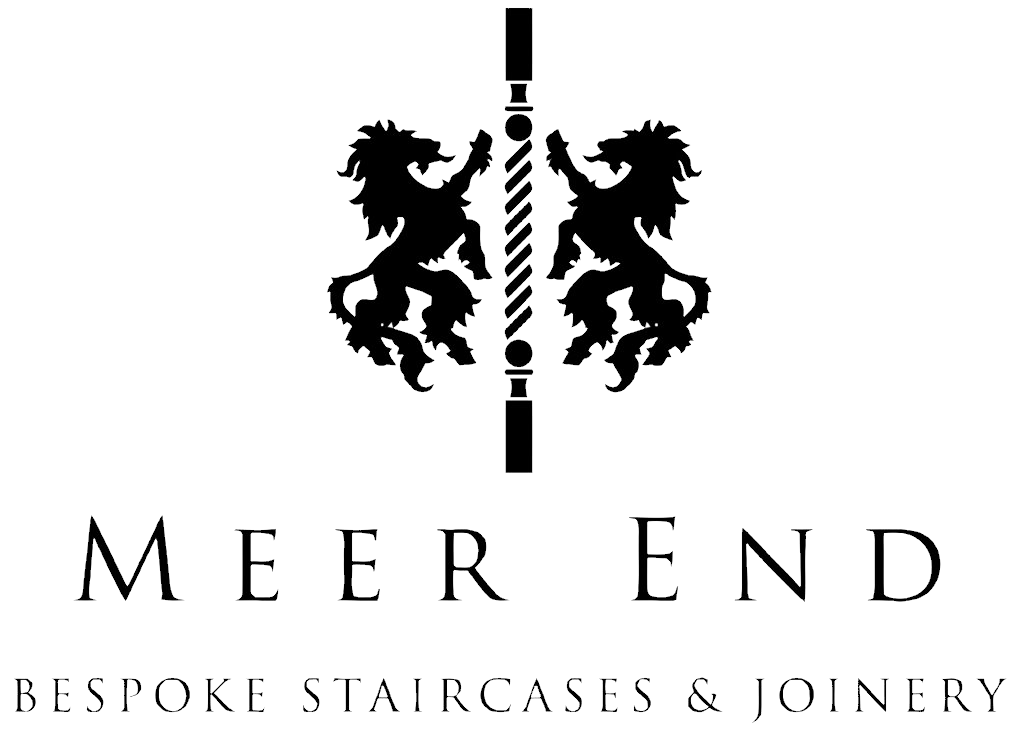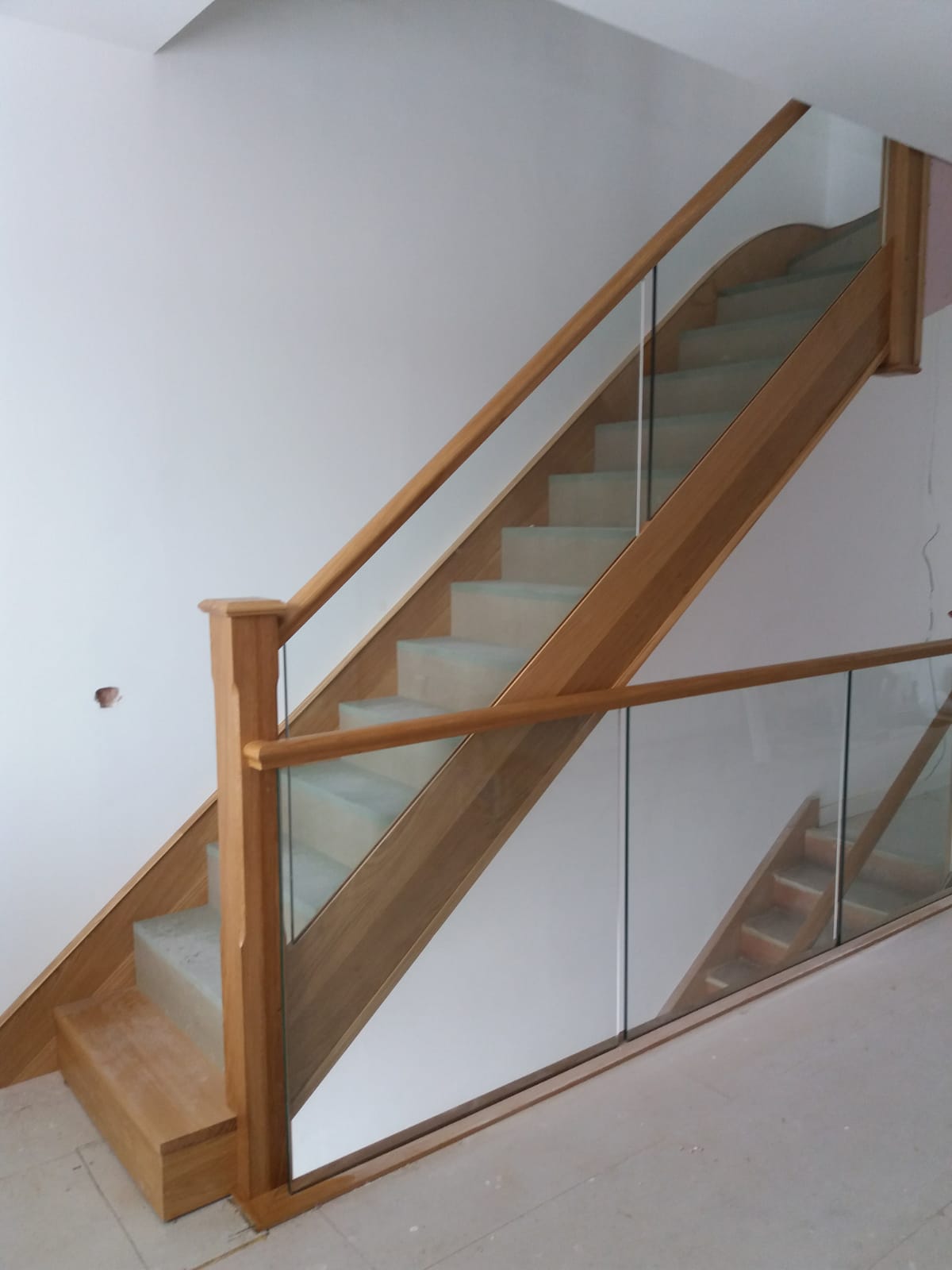Wood has shaped the character of British homes for centuries. From timber-framed halls to the fine joinery of Georgian interiors, it remains a living material — warm to the touch and rich in texture. In traditional staircases, wood does far more than provide structure; it defines the aesthetic, the craft, and the emotional presence of the staircase itself.
A Living Material with Enduring Qualities
Timber has a personality that no synthetic material can imitate. It carries warmth, absorbs light differently throughout the day, and changes subtly with time. For a traditional wooden staircase, this natural variation is a feature, not a flaw. Grain patterns and colour shifts give each project individuality, ensuring no two staircases are identical.
Hardwoods such as oak, ash, and walnut have long been preferred for their stability and durability. They resist warping, hold fine detail, and age gracefully — developing a patina that adds depth rather than wear. For this reason, many period staircases still in daily use today have survived hundreds of years with only careful maintenance.
Selecting the Right Timber
Each hardwood species brings distinct qualities that influence both performance and appearance. Choosing the right one depends on the architecture, the lighting, and the atmosphere you want the staircase to convey.
- Oak: The hallmark of British joinery — strong, dependable, and full of character. Its visible grain gives structure and definition to classic traditional oak staircases.
- Ash: Pale and open-grained, ideal for lighter, more contemporary interpretations of traditional form.
- Walnut: Deep-toned and refined, suited to formal interiors and homes with period panelling.
- Beech: Uniform in texture, making it excellent for painted finishes where the craftsmanship, not the grain, takes focus.
At Meer End, timber is selected individually, with boards matched for grain direction and colour before construction begins. This attention to detail ensures every staircase has visual harmony from tread to handrail.
For examples of how different timbers transform a design, view our Traditional Staircases Gallery.
Craftsmanship: Joinery That Endures
The way a staircase is made determines how it will age. In staircases traditional design, joints such as mortise and tenon or housed stringers create strength without the need for visible fixings. This craftsmanship allows timber to expand and contract naturally with the seasons while maintaining stability.
Unlike prefabricated or metal-framed stairs, a hand-built wooden staircase can be repaired, refinished, and even modified generations later. The joiner’s skill transforms wood into structure — turning a natural material into an architectural feature.
Styles of Traditional Balustrades
Different architectural eras inspire distinct balustrade styles, each suited to particular settings:
- Turned Spindles: Common in Georgian and Victorian homes; these feature rounded shapes, flutes, and collars that add depth and movement.
- Square or Chamfered Balusters: Simpler and well-suited to cottage or Arts & Crafts interiors. Their clean geometry brings subtle strength.
- Panelled Balustrades: Found in grander period homes; often solid timber panels set within moulded frames, creating privacy and weight.
At Meer End, our staircases with traditional panels are designed to echo original joinery while meeting modern safety requirements. Every spindle or panel is individually made — no two are quite identical, which is part of the appeal.
Finish and Character
Finishing determines how the staircase feels under hand and foot. Traditional finishes include oil, wax, or shellac — all chosen to enhance rather than mask the timber’s surface. Oiled oak has a soft sheen that deepens with use; wax provides a gentle glow and tactile warmth.
Painted finishes have a long heritage too, particularly in Georgian and Edwardian homes where balustrades were often painted cream or off-white with a darker handrail for contrast. This combination remains popular today for its timeless balance of lightness and definition.
Meer End craftspeople advise homeowners on finishes that will mature gracefully, complementing existing joinery and ensuring the staircase remains both practical and beautiful.
Sustainability and Sourcing
In today’s world, sustainability matters as much as style. Responsibly sourced hardwoods from managed forests provide an environmentally sound alternative to composite materials. They store carbon rather than create it, and when properly maintained, a solid timber staircase can last a lifetime — or several.
Working with natural materials also supports local sawmills and traditional skills. Each project becomes part of a longer chain of British craftsmanship that values renewal and respect for resources.
The Relationship Between Wood and Light
Light interacts with wood in subtle ways, shaping the atmosphere of a space. A staircase built in oak or walnut responds differently to daylight, creating tone and shadow that shift through the day. This is why traditional staircases UK often feel alive within the architecture — the wood seems to breathe with the house itself.
Choosing the right timber tone and finish for the lighting conditions of your hallway or landing can completely transform the perception of space. A darker timber grounds tall ceilings; a lighter one opens compact hallways and reflects light upwards through the stairwell.
To see how light and timber work together in practice, browse Meer End’s Traditional Staircases Gallery.
Longevity and Maintenance
Properly maintained timber will outlast most modern materials. Routine care involves dusting, occasional waxing, and keeping moisture balanced. Unlike metal or glass, wood can be refinished and repaired indefinitely — sanding removes years of wear, and oil restores its natural lustre.
This longevity is part of what makes wood the defining choice for bespoke traditional staircases. It’s a material that invites care and rewards attention — growing more beautiful as it ages.
FAQs
Why is wood preferred for traditional staircases?
Because of its strength, versatility, and natural beauty. It allows for intricate joinery and offers a tactile warmth unmatched by synthetic materials.
What type of wood is most commonly used in traditional staircases?
Oak remains the standard choice for durability and visual appeal, though ash, walnut, and beech are also used for specific tonal or stylistic reasons.
How can I choose the right wood for my staircase?
Consider your home’s style, lighting, and colour palette. A lighter wood like ash suits modern settings, while oak or walnut complements classic interiors.
Are wooden staircases sustainable?
Yes. When sourced from responsibly managed forests, hardwood is a renewable and low-carbon material that lasts for generations.
How should I maintain a wooden staircase?
Dust regularly, avoid harsh cleaning products, and re-oil or wax occasionally. Proper maintenance preserves finish and prevents drying or cracking.
Can wooden staircases meet modern building standards?
Absolutely. Skilled joiners adapt traditional techniques to meet today’s safety regulations without compromising on craftsmanship.
Do wooden staircases increase home value?
Yes. They signal quality and permanence, adding visual and financial value through authentic craftsmanship and natural materials.
In Closing
Wood is more than a material — it’s the soul of a staircase. It connects craftsmanship, sustainability, and beauty in a way no other medium can. A well-designed wooden staircase becomes part of a home’s story, growing richer with each generation that uses it.
To explore what’s possible in timber, visit Meer End’s bespoke traditional staircases
or view our Traditional Staircases Gallery for examples of wood crafted into architecture that endures.



